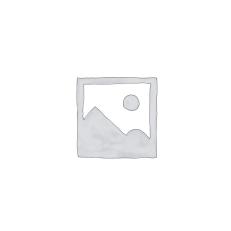Description
ABSTRACT
Laterite is one of the major materials used in highway pavement construction. Its properties are affected by some environmental factors which may make it unsuitable for highway pavement construction. This research was aimed at investigated the effect of sodium sulphate ( NaSO4) on engineering properties of lateritic soil in highway construction.
Laterite soil sample was collected from a burrow pit and it was overdried for about 24hours. The sample was divided in four portions after being properly mixed in laboratory. The first portion was not contaminated with any salt, it serve as a control sample(sample A) while the remaining three portions were contamination with 20kg, 30kg and 40kg of NaSO4 and were labeled D,E, and F respectively. The sample were allowed to stand for 7days before they were subjected to the following laboratory test: particle size analysis, Atterberg limits, Bristish standard compaction and califonia bearing Ratio (CBR) tests.
The result showed that the effect of sodium sulphate solution has strong influence on the engineering properties of the laterite soil when compared with the control soil sample.
The influence caused reduction in the strength of the soil and there by rending it Unsuitable for Civil Engineering construction.
TABLE OF CONTENTS
Title Page i
Declaration ii
Certification iii
Dedication iv
Acknowledgement v
Abstract vi
Table Contents vi-viii
List of Tables ix-x
List of Figures ix
1.0 Introduction 1-2
1.1 Statement of the Problem 2
1.2 Aim and objective of the Study 2
1.3 Justification 3
1.4 Scope of the Study 3
1.5 Methodology 3-4
CHAPTER TWO
2.0 Literature Review 5-6
2.1 Origin of Laterites 6
2.1.1 Definition of Laterite 7
2.1.2 Formation of Laterite 7-8
2.1.3 Profiles of Lateritic Soils 8
2.1.4 Improvement of Lateritic Soils 9-10
2.2 Engineering Properities of sLateritic Soils 10
2.2.1 Particle-Size Distribution of Lateritic Soil 10-11
2.2.2 Plasticity Characteristics of Lateritic Soil 11
2.2.3 Compaction Characteristics of Lateritic Soil 12
2.2.4 Shear Strength Characteristics of Lateritic soils 12-13
2.3 General uses of Laterites 13-14
2.4 Sodium(II) Tetraoxosuphate (VI) Salt 14
2.4.1 Preparation and Occurrence of NaSO4 15
2.4.2 Chemical Properties of Sodium(II)Tetraxosulphate (VI) Salt 15-16
2.4.3 Uses of Sodium(II)Tetraxosulphate(VI) Salt 16
2.4.4 Toxicological Effect of Sodium(II) tetraxosulphate (VI) salt 16
2.5 Stabilisation 17
2.5.1 Objectives of Stabilization 17
2.5.2 Method of Stabilisation 17-18
CHAPTER THREE
3.0 Methodology 19
3.1 Procurement of materials 19
3.2 Collection of Samples 19
3.3 Experimental Investigation 19
3.3.1 Particle Size Distribution 19-20
3.3.2 Atterberg’s Limit Test 20-22
3.3.3 Compaction Test 22-23
3.3.4 Califonia Bearing Ratio 23-24
CHAPTER FOUR
4.0 Result Analysis and Discussion 25
4.1 Particle Size Distribution 25-27
4.2 Atterberg Limit Test 28-32
4.3 Compaction Test 33-37
4.4 Califonia Bearing 37-41
4.5 Comparison of Result 42
CHAPTER FIVE
5.0 Conclusion 43
5.1 Recommendation 44
References 45-46
APPENDICES A-E 47-51
LIST OF TABLES
Table 4.1: Result of particle size Distribution 25
Table 4.2.1: Atterberg Table for Sample A 28
Table 4.2.2 Atterberg Table for Sample B 30
Table 4.2.3 Atterberg Table for Sample C 31
Table 4.2.4 Atterberg Table for Sample D 32
Table 4.3.1: Compaction Table for Sample A 33
Table 4.3.2 Compaction Table for Sample B 34
Table 4.3.3: Compaction Table for Sample C 35
Table 4.3.4: Compaction Table for Sample D 36
Table 4.4.1: CBR Table for Sample A 37
Table 4.4.2: CBR Table for Sample B 38
Table 4.4.3: CBR Table for Sample C 39
Table 4.4.4: CBR Table for Sample D 40
Table 4.5: Comparison of Result 42
LIST OF FIGURES
Fig 4.1: Grain Size Distribution Curve 26
Fig 4.2.1: Plastic Limit Graph for Sample A 28
Fig 4.2.2: Plastic Limit Graph for Sample B 30
Fig 4.2.3: Plastic Limit Graph for Sample C 31
Fig 4.2.4: Plastic Limit Graph for Sample D 32
Fig 4.3.1: Compaction Graph for Sample A 33
Fig 4.3.2: Compaction Graph for Sample B 34
Fig 4.3.3: Compaction Graph for Sample C 35
Fig 4.3.4: Compaction Graph for Sample D 36
CHAPTER ONE
1.0 INTRODUCTION
Soil is the cheapest and the most widely used material in civil engineering project as foundation material either in its natural or improved form. It is highly heterogeneous and an isotopic in nature and existing with different engineering properties which can be influenced to some extend by the presence of sodium salts under the influences of water (Olawale, 2013).
The properties of soil as an engineering material depend on its surface electric charges, chemical composition, shape and size. The chemical composition influences to exhibit enormous change in the engineering properties especially in soil with high content of clay materials (Olawale, 2013).
Lateritic soil is one of the commonest materials that are widely used in the construction of civil engineering infrastructures, such earth dams, covers and pavement is constructed in layers in Nigeria, and surfacing. The first three layers are mostly constructed using laterite soil depending on the expected traffic volume and intensity suitability on the soil in terms of specification (Agbode and Osunolalo and FMN, 1997).
Transportation geo-environmental is a new emerging area that is interdisciplinary in nature. It cut across transportation, geotechnical and environment engineering, and aim at analyzing, predicting and solving problem of soil that are affected by environmental factors (Olawale, 2013).
The study of the effects of soluble salts in soil found out that chloride, sulphate and nirate of sodium increases the permeability of the soil, since there is clear indication that permeability; one of the engineering properties of soil is affected by the presented of the salts, it is pertinent to investigate their effect on the wider properties of the soil (Olawole, 2013).
The investigation made on the effect of sodium sulphate water on the mixed with clay soil, the result indicate there was increase in optimum moisture content and decrease in maximum dry density (Sherwood, 1992)
The effect of sulphate salt on engineering properties of lateritic soil was examined and the finding shows the maximum dry density and specific gravity decrease with tine while optimum moisture content increase with time (Sherwood, 1992)
The research is aimed at evaluating the effect of salt contamination on the engineering properties of soil using hydrated sodium (ii) tetraoxosulphate (iv) salt (NaSO4).
- STATEMENT OF THE PROBLEM
The effect of sodium sulphate contamination on engineering properties of lateritic soil causes failure to highway pavement in existing roads and make highway foundation materials to be unsuiltable for highway construction.
1.2 AIM AND OBJECTIVES OF THE STUDY
- Access the actual performance of lateritic soil when contaminated with sodium (ii) tetraoxosulphate (iv) salt (NaSO4)
- To identify and appraise NaSO4 as a contaminant on lateritic soil.
- To show the effect of the NaSO4 on various engineering properties of lateritic soil.
- To evaluate the strength of lateritic soil when contaminated sodium (ii) tetraoxosulphate (iv) salt (NaSO4) and when free from the contaminant.
1.3 JUSTIFICATION
The effect of sulphate salt contamination on lateritic soil is highly needed in order to determine its effect on the engineering properties of lateritic soil which is the most commonest material used in highway pavement.
1.4 SCOPE OF THE STUDY
The research focused on the effect of sodium(ii)tetraoxosulphate(iv)salt as a contaminant on lateritic soil. The sample will be collected from a burrow pit and divided into four portions.
The first sample will be without NaSO4 while the remaining three portions will be contaminated in varied proportion.
The specimen will be subjected to the following tests:
- Particles size analysis (sieve analysis)
- Atterberg’s limits
- Compaction
- Califonia Bearing Ration(CBR)
- PROPOSED METHODOLOGY
- Procurement of material NaSO4)
- Collection of the soil sample from a burrow pit
- Mixing of the soil sample and NaSO4) as specimen; a portion will not be mixed which will serve as control for other mixed with contaminant.
- Carrying out of laboratory tests which includes
- Particles size analysis
- Atterberg’s limits
- British standard compaction
- Califonia Bearing Ratio(CBR)
- Calculation and analysis of the result.
CHAPTER FIVE
5.1 CONCLUSION
From the investigations carried out on this work, the following conclusions are made:
The laterite sample is classified as Sand Gravel soil according to AASHTO classification system and it is a good sub grade and sub-base material for Civil Engineering construction.
The liquid test for unstabilized laterite is 60.31% and for the stabilized of 20% is 50.16,30 % is 46.9% and for 40% is 45.05 and plastic limits test for unstabilized laterite is 36.62% and for the stabilized of20% is 36.50, 30% is 33.99 and for 40% is 24.4 and liqiud indices test for unstabilized laterite is 23.69% and for the stabilized of 20% is 13.66, 30% is 12.91 and for 40% is 34.7 decrease with the addition of the contaminants. This reduction increase with increase in concentration of the contaminant “NaSO4” and meet the requirement of Federal Ministry of works (1975).
The California bearing ratio which is an important index for determining the usage of soil sample for construction also decrease with the ratio of increase of contaminant “NaSO4”
The maximum dry density decreases and optimum moisture content increase with the increase in concentration of the contaminant “NaSO4”
All the above show that the presence of NaSO4 in highway foundation materials can make them unsuitable for Civil Engineering construction or can cause pavement failure in existing roads.
5.2 RECOMMENDATION
The following recommendations are made:
The various sources of sodium sulphate contaminant in highway should be avoided by providing excellent drainage along highways.
The effect of the contaminant should be extended to base materials, especially if the base is constructed with lateritic soil because the effect on stone base may not be appreciable.
Sodium sulphates contaminants should also be avoiding through proper environmental impact assessment for roads under construction and existing highways.

